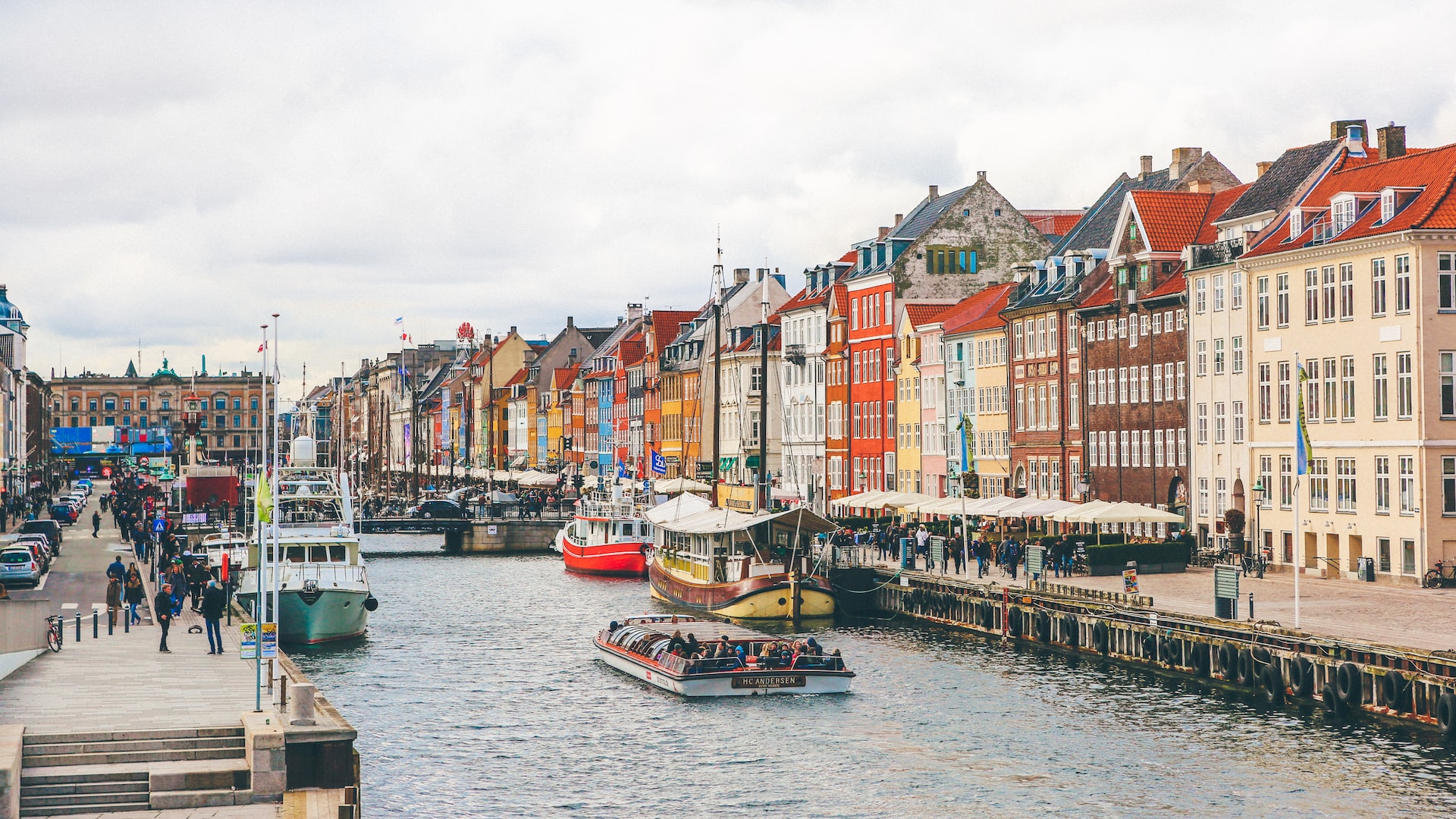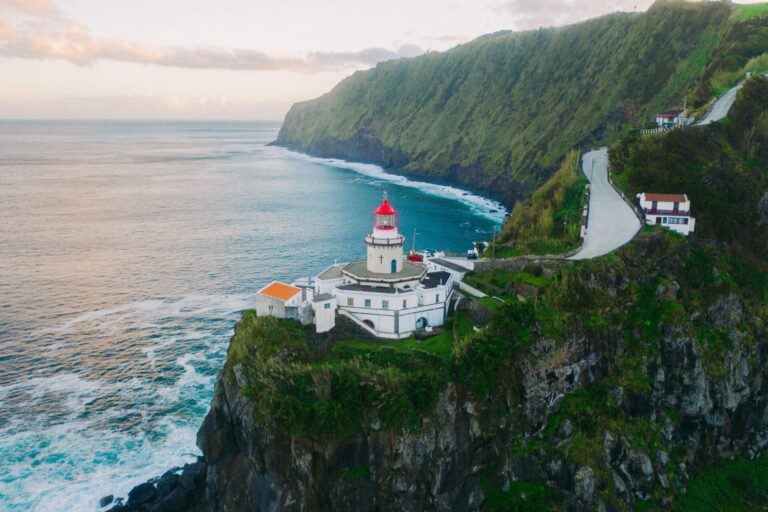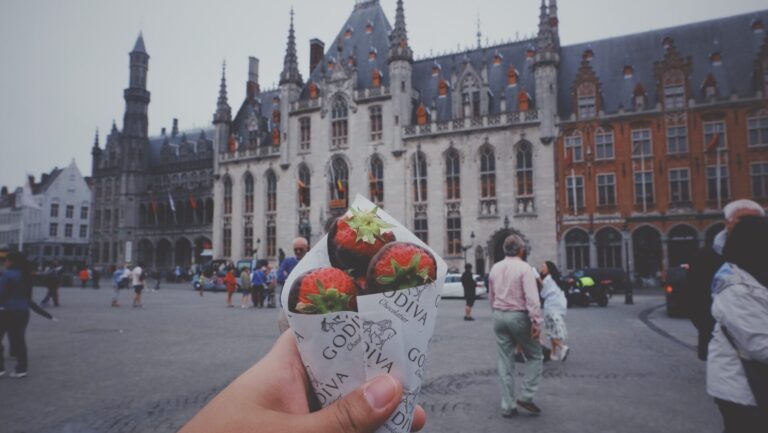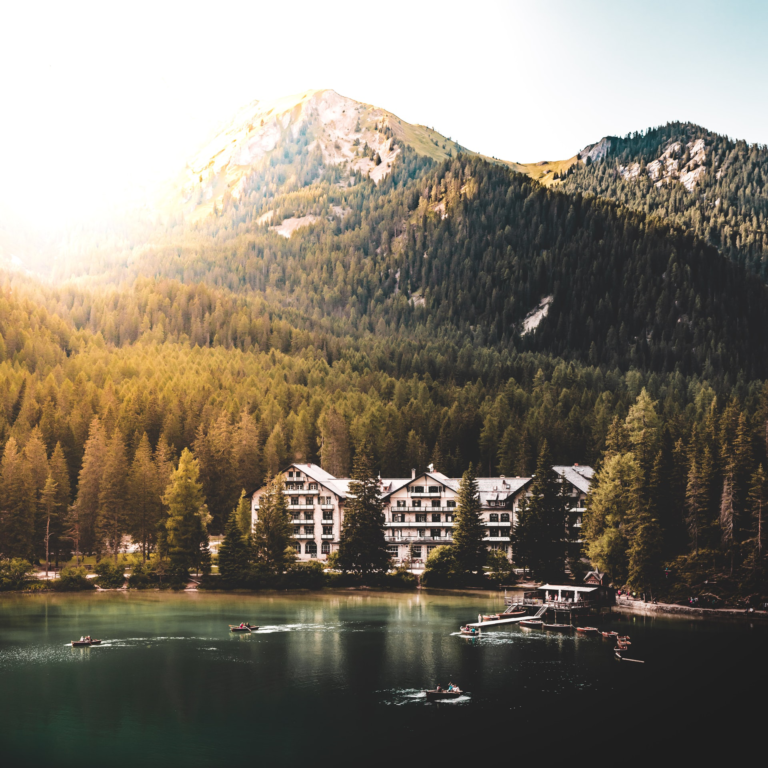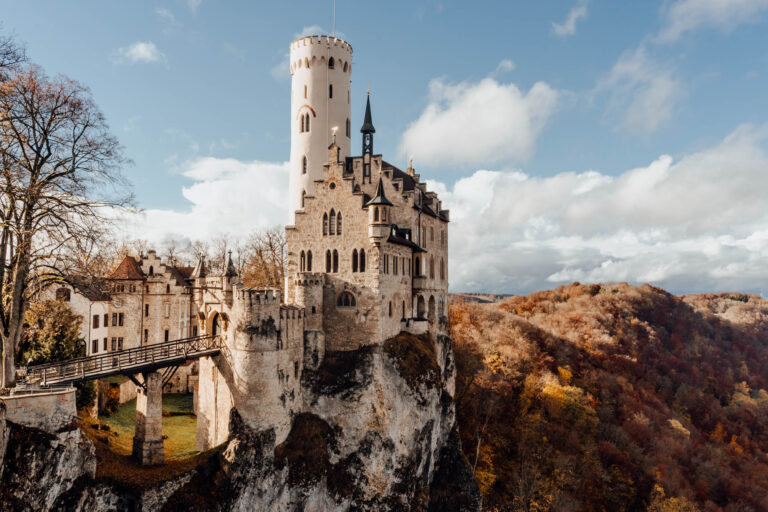A complete guide to Copenhagen, Denmark
Copenhagen, the capital of Denmark, is known as a beautiful city where both historical landmarks and modern architecture can be found. Nowadays, Copenhagen is mainly known for its sustainable mindset, which is why I wanted to visit it.
In this city guide, I’ll go over everything you need to know about visiting this beautiful city. What are the must-sees in the city, what food do you have to try, and where you should stay in Copenhagen.
Page Contents
A Copenhagen Guide; everything you need to know about Denmark’s Capital
The Danes rank among the happiest people in the world. And after visiting Copenhagen, you’ll understand why: royal history, modern architecture, a lot of cultural events, and most importantly: sustainable living!
What to know before visiting Copenhagen
- Try to stay at least three days in Copenhagen; this will give you enough room to visit Copenhagen’s main attractions and discover some of their hidden gems.
- The weather is the most comfortable in the summer, as its heavily influenced by the sea. Thanks to its northern location, there is also much more daylight than in winter.
- Copenhagen is quite an expensive city to visit. This starts with the cost of accommodation and carries on to the excursions. Your meals and restaurant visits will hit your budget the hardest.
- The city of Copenhagen is known as “the world’s first bike city,” which means its one of the most cycle-friendly cities in Europe. This makes it the easiest mode of transportation around the city.
Key facts about Copenhagen
Copenhagen is the most famous city in the land of Hans Christian Andersen’s fairy tales.
| Country | Denmark |
| Names | København, Kopenhagen, and Kjøbmandehavn |
| Currency | Danish Krone (DKK) |
| 1 DKK to euro | 0.13 euro / 0.13 dollar |
| 1 euro to DKK | 7.45 DKK |
| Population | 809 314 |
| Airport | Kastrup Airport |
| Travel adaptors | European C-plug (230V // 50Hz) |
Copenhagen Travel Costs
In general, the living cost in Denmark is quite expensive. I listed some of the most basic expenses below to give you a general idea of the cost of living in the city.
| Expense | Danish Krone | Euro |
| Hostel | 200 DKK | 28 euro |
| Budget Hotel | 500 DKK | 70 euro |
| Decent Meal | 125 DKK | 17.5 euro |
| Bottled Water | 20 DKK | 2.8 euro |
| Beer | 45 DKK | 6.3 euro |
| Cola | 20 DKK | 2.8 euro |
| Coffee | 35 DKK | 5 euro |
| Copenhagen card | 24 hours (419 DKK) 48 hours (619 DKK) 72 hours ( 759 DKK) 96 hours (889 DKK) 120 hours (999 DKK) | 60 to 140 euro |
How do you get to Copenhagen?
Getting to Copenhagen by plane
Flying from Brussels to Copenhagen (CPH, Kastrup Airport) takes just an hour and a half.
Copenhagen is actually a very accessible airport and allows you to fly to many many other major European and even international cities, which makes it a perfect city to fly to for a road trip or for a short city break.
Getting from Kastrup (Copenhagen Airport) to the city center
Copenhagen Airport is quite close to the city center and only takes 15 minutes by public transport.
| By Bus | There are several bus lines from the airport to the city center. The most popular option is Bus 5A. |
| By Flexibus | There are flexibusses and Nettbusses from the airport that drive to various parts of Denmark ànd Sweden! |
| By Train | Copenhagen City Center (Københavns Hovedbanegården – Central station) is a 15-minute train ride away from the airport and costs only 36DKK. |
| By Metro | The metro brings you to the most popular regions of Copenhagen; Nørrebrø, Vesterbrø, Frederiksberg, and Osterbrø! |
| Other | Taxi and car rental |
Transport in Copenhagen: How to get around in Copenhagen
The public transport infrastructure here is one of the most efficient and reliable in the world, but still … the best way to get around is by bike.
Get around Copenhagen by bike
We briefly mentioned it already; the Copenhageners really love biking! This means that the local government is encouraging people to bike around the city … and built various big bike lanes and several bridges that are only accessible to cyclists.
The city is built with a “cyclists first”-attitude, which makes it the fastest and most convenient way to move around, and as an added bonus: it’s also the most healthy and climate-friendly mode of transportation in Copenhagen.
During our visit, we rented our (cargo) bikes at Baisikeli bike rental. This bike shop is close to Dybbelsbro and Fisketorvet in Vesterbro, and has a wide array of bikes for rent. What makes Baisikeli special is the fact that they are fixing and shipping used bikes to Tanzania, Sierra Leone, and Ghana to meet African needs. This is also where their name comes from, as it is Swahili for “bicycle.”
And while you’re at it, try to visit the Cykelslangen (bike snake) as it’s a very instagrammable bridge. It’s 220-meter long and crosses Gasværkshavnen from Kalvebod Brygge in the west to Havneholmen in the east.
Taxis in Copenhagen
Copenhagen is an expensive city, which means that the Taxis are as well. Especially since there aren’t any rideshare options like Uber or Lyft available.
Public Transport in Copenhagen
Copenhagen has a Rejsekort ticket system which allows you to use the metro, bus, and train with the same tickets. The prices for these tickets are based on the zones you’re visiting, but I advise you to buy a Copenhagen Card, which is a city tourism card and means that public transportation is free. Additionally, it will get you free or discounted access to some of the best things to do in Copenhagen, such as various museums, galleries, cruises, and castles.
Where’s the best place to stay in Copenhagen
While there is a wide variety of accommodation options (hostels, hotels, and Airbnb apartments), it’s not uncommon for the cheaper options to sell out during the summer as Copenhagen is thriving with events during the summer.
Here are some of the most popular hotels in Copenhagen:
- Woodah Boutique Hostel
- Steel House
- Urban House
- Hotel Skt Petri
- Hotel d’Angleterre
- Hotel SP34
The best places to eat and drink in Copenhagen
The Copenhagen cuisine is known in the international food scene for being a bit high-end and experimental while still serving Danish dishes. The city has a green thinking mindset, which translates to the local restaurant industry as well, where they try to produce their food organically and minimize their food waste.
Coffee: Barisso Coffee, Coffee Lab, and Mad & Kaffe.
Lunch: Sidecar Brunch, Copenhagen Street Food Market, x§klyn Bar, The Bagel Co, Wok On, Aamanns 1921, Kronborg, and Selma.
Healthy: Joe and The Juice, 42Raw, SimpleRaw, Palao Torvehallerne, Gro Spiseri (Rooftop farm) & Alchemist (2 Michelin stars)
Dinner: MASH, Cocks and Cows, Schønnemann, Lumskebugten, Aamanns 1921, Noma, Kødbyens Fiskebar, Barr, Alberto K, Sticks’n’Sushi, Gro Spiseri, and Høst.
What is Copenhagen known for?
Next to its sustainable mindset and its food scene, Copenhagen is also known for its history, its modern design and architecture, and its fashion.
Copenhagen is a fashion city
The Copenhageners are known as stylish and fashionable people, which is why Copenhagen Fashion Week attracts many visitors, and has been named the fashion capital of Scandinavia.
Their cool climate pushed the Danish fashion industry to come up with warm creations and made them flourish like never before. Some of the fashion stores I visited are Norr, Bloom & Bloom, Han Kjøbenhavn, Res-Res, and Le Fix.
Danish Design and historic architecture
Ever since the city started to invest in Urban planning, the local architects are going crazy, creating new architectural must-sees that are part of Copenhagen’s cityscape alongside historic buildings and palaces.
Personally, I experienced Copenhagen as one of the most innovative cities in Europe when it comes to interior design, architecture but also urban planning. Feel free to visit CopenHill Slope, Superskilen park, Marble Church, Design Museum Danmark, Studio Oliver Gustav, and Edition Copenhagen so you can observe it as well.
Tip: If you capture the stunning beauty of Copenhagen but find yourself at a loss for words, check out our ‘Denmark Captions for Instagram’-blogpost. We’ve got the perfect phrases to complement your photos.


The best things to do in Copenhagen
In general, most attractions and the places to visit are located in the center of the city and are thus quite close to each other. You can easily spend a whole day just walking around and visiting landmarks.
Visit Assistens Churchyard
What started 250 years ago as a graveyard where the Copenhageners buried their dead is now one of Nørrebro’s most interesting recreation grounds, especially since the city is slowly turning Assistens Kirkegård cemetery into a park.
Wandering around the cemetery allows you to learn more about Copenhagen’s history, as some of the most notable people in Danish history are buried here; Hans Christian Andersen (Danish author) and Søren Kierkegaard (philosopher and poet) to name a few.
Don’t be surprised if you’ll see Copenhageners hang out – and even sunbathe – here, as it’s filled with peaceful gardens and art sculptures.
Discover the castles in Copenhagen
We’ve already acknowledged how modern and trendsetting it is, but the truth is that Copenhagen has a rich history which is why you’ll find various castles and palaces all over the city.
The three most impressive castles in Copenhagen are Rosenborg Castle, Amalienborg Palace, and Christiansborg Palace – all free to visit with the Copenhagen Card.
Rosenborg Castle
Rosenborg Castle was built in 1606 and was meant to be a royal summer house for Christian IV, King of both Denmark and Norway.
The castle still contains all kinds of royal artifacts – such as the Danish crown, the crown jewels, three life-sized lion statues, and the coronation throne – which makes it the perfect time capsule to the 17th century.
Next to its beautiful interior, the landscaped garden gives a similar feel to the palace of Versailles, as it’s a real attention grabber!


Amalienborg Palace
Amalienborg Palace is home to the Danish royal family and is known for the changing of the guards; every day, around noon, the Royal Life Guards march from their barracks by Rosenborg Castle through the streets of Copenhagen to Amalienborg.
Amalienborg itself consists of four identical buildings;
- Christian VII’s Palace (“Moltke’s Palace,” used as a guest residence)
- Christian VIII’s Palace (“Levetzau’s Palace, “used as a guest palace for Prince Joachim and Princess Benedikte)
- Christian IX’s Palace (“Schack’s Palace,” home of Queen Margrethe II of Denmark)
- Frederik VIII’s Palace (“Brockdorff’s Palace,” home of the Crown Prince family)
Christiansborg Palace
The present Christiansborg Palace was only completed in 1928 but actually has roots going back over 800 years, when various kings and queens ruled over the country.
Today, the palace is used by the Danish Parliament and the Queen for official events (Gala banquets, Public audiences,..)
Spend the day around the canals
Instead of exploring the city by biking around the scenic routes and charming neighborhoods, you can discover the historic city by cruising around in a boat or a kayak.
The Port of Copenhagen is the largest Danish seaport and one of the largest ports in the Baltic Sea which means that all of Copenhagen’s historic buildings and main sights are located near canals, thanks to historical reasons. The Copenhagen Opera House, Christiansborg Palace, and the Little Mermaid to name a few!
Copenhagen’s canals are also home to some fun activities, such as the Kayak Republic and Islands Brygge Harbour bath.
- Kayak Republic for kayaking courses and guided tours
- Islands Brygge Harbour bath, an open-air swimming pool in the city center
Other attractions to look out for …
As I wasn’t able to visit every attraction in city, I thought we’d include some of the attractions that some other reputable sources and blogs have mentioned. Keep in mind that most of these other sites included the same recommendations that I have given above.
The Little Mermaid
As an homage to Hans Christian Andersen, one of his most beloved characters was immortalized by turning it into a small bronze statue. By now, the iconic danish sculpture of the little mermaid is over 100 years and is known as one of Copenhagen’s most popular attractions.
Most other blogs and trip advisors advise you to visit the little mermaid statue while you’re in the area, but we’ve heard that the statue was surprisingly small and even a little unspectacular – which is why I skipped it. Some of our friends mentioned that the walk from Nyhavn to the little mermaid statue was the most spectacular part of this attraction.
Other attractions worth visiting would be:
- Christiansborg Palace Ruines
- Round Tower
- Church of our Saviour
- Tivoli Gardens
- Kastellet Park
- Christiania
- Botanical Gardens
Most instagrammable places around Copenhagen
Don’t forget to bring your Sony A7III camera, because Copenhagen is filled with historic charm, modern architecture, and narrow picturesque canals. This makes the city super instagrammable, with a lot of good photo opportunities. Below are some of our favorite spots!
Superkilen
Superkilen is an urban park located in the center of Nørrebro, designed by Bjarke Ingels in collaboration with the Danish group of artists Superflex and the Berlin-based landscape designers Topotek 1.
Their goal was to showcase the cultural diversity of the area with a contemporary language. They accomplished this by adding sewage drains from Israel, palm trees from China, and neon signs from Russia – making this park into a 30.000 m2 public gallery.


Kalvebod Fælled
Kalvebod Fælled, also known as Vestamager, is a relatively new part of Denmark; the 20-km2 area emerged from the sea in 1943 and is now purposed as a nature reserve as its a paradise for birds and wildlife as it houses one of the important migratory routes between northern Scandinavia and southern Europe.
Copenhill
CopenHill is a multi-use waste-to-energy plant designed by Danish architect Bjarke Ingels and has won various awards, such as ‘Building of the Year 2021‘ since the building has multi-purposes. By the base, it’s a waste-to-energy power plant .. but it’s also a ski slope, a climbing wall, and it contains a cafe.
This means that Copenhill is not only an architectural marvel, it’s also an iconic building for Copenhagen’s urban planning and sustainability program; it shows that architecture can work in favor of the environment.
Copenhill is also known as “Amager Bakke” or “Amager Slope” and was one of the first projects to bring them closer to the goal of transforming the Danish capital into the world’s first carbon-neutral city by 2025.
Nyhavn
The most instagrammable places in the city can be found around Nyhavn, and that’s also where most tourists spend their time: from wandering around Nyhavn and enjoying its colorful houses to visiting all the tourist traps.
Being a 17th-century harbor, Nyhavn is easily the most iconic and authentic landmark in the capital. The harbor and the neighborhood are filled with wooden ships, modern boats, cozy restaurants, and crooked and multicolored townhouses.


Day trips from Copenhagen
Denmark has more to offer than its capital, so I decided to list a few day trips in the area for when you’re looking to discover Denmark some more!
- Legoland
- The Cliffs of Møn
- Odense, the third largest city in Denmark
- Aarhus, the second largest city in Denmark
- Malmö in Sweden!
- Kronborg Castle
- Frederiksborg Palace
- Egeskov Castle
- Louisiana Museum of Art
Must-visit events in Copenhagen
Copenhagen is effortlessly trendy, culturally rich, and the essence of Scandinavian chic. This also means there are some incredibly unique events that are taking place in Copenhagen. We listed our favorite ones!
CPH Open
Over the years, the CPH Open skateboarding gathering grew out to be a pilgrimage for skateboarders make across the globe. Since 2007, Copenhagen has been investing in urban planning and making its city accessible for skateboarders.
This is something they are now reaping the fruits of, as many international skateboarders – both pros and amateurs – travel from the USA, Brazil, Australia, Japan, and beyond to experience CPH Open, re-connect with old friends, meet new ones, enjoy rolling through the city, and showcase their skateboarding skills.
Distortion Festival
Another element that showcases the efforts the city put into urban planning is the Distortion festival. The festival started in 1988 and grew into a large series of street parties and club parties.
It began as a one-night party in a club in Copenhagen and is now a full-blown annual festival happening in the streets of Nørrebro and Vesterbro during the first week of June. The event grows bigger every year and spreads joyful vibes all across the city.
Copenhagen Fashion Week
Danish fashion has long been known for its minimalism and its high quality. In the meanwhile, Copenhagen has been named the fashion capital of Scandinavia. It shouldn’t surprise you when I recommend Copenhagen Fashion Week as a must-visit event.
Especially as casual comfort is king for the Copenhageners, accompanied by laidback attitudes and sustainable solutions for the entire industry.
Copenhagen Fashion Week has grown on the global scene and manages to attract esteemed industry leaders to attend four days of fashion showcases.
Save for later …







